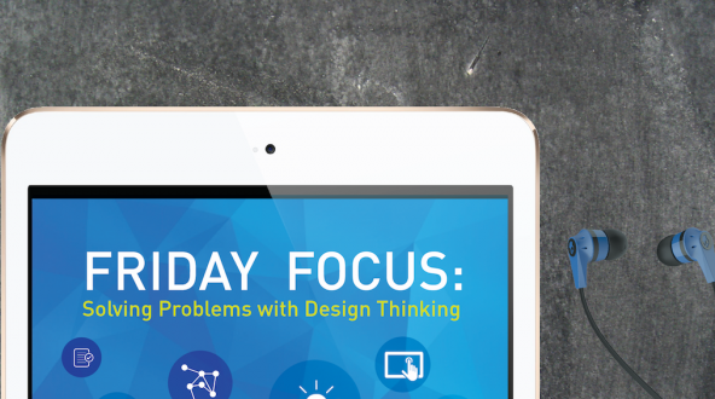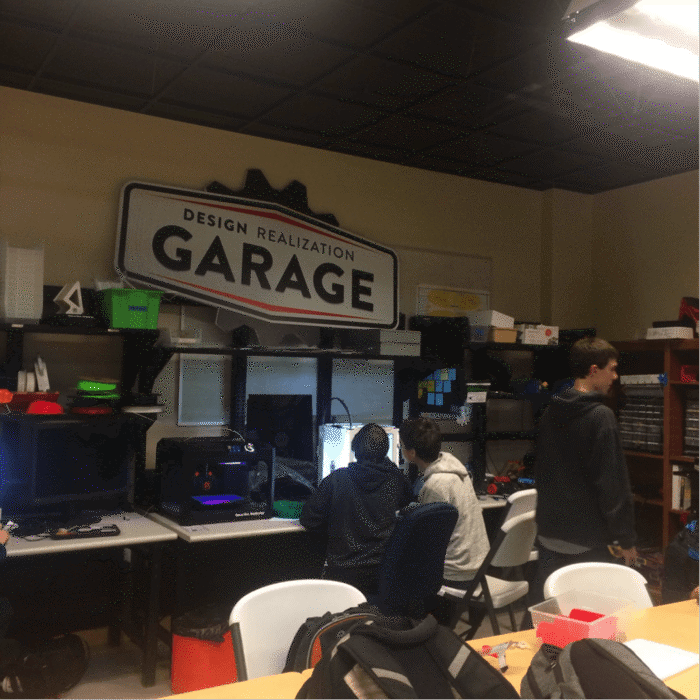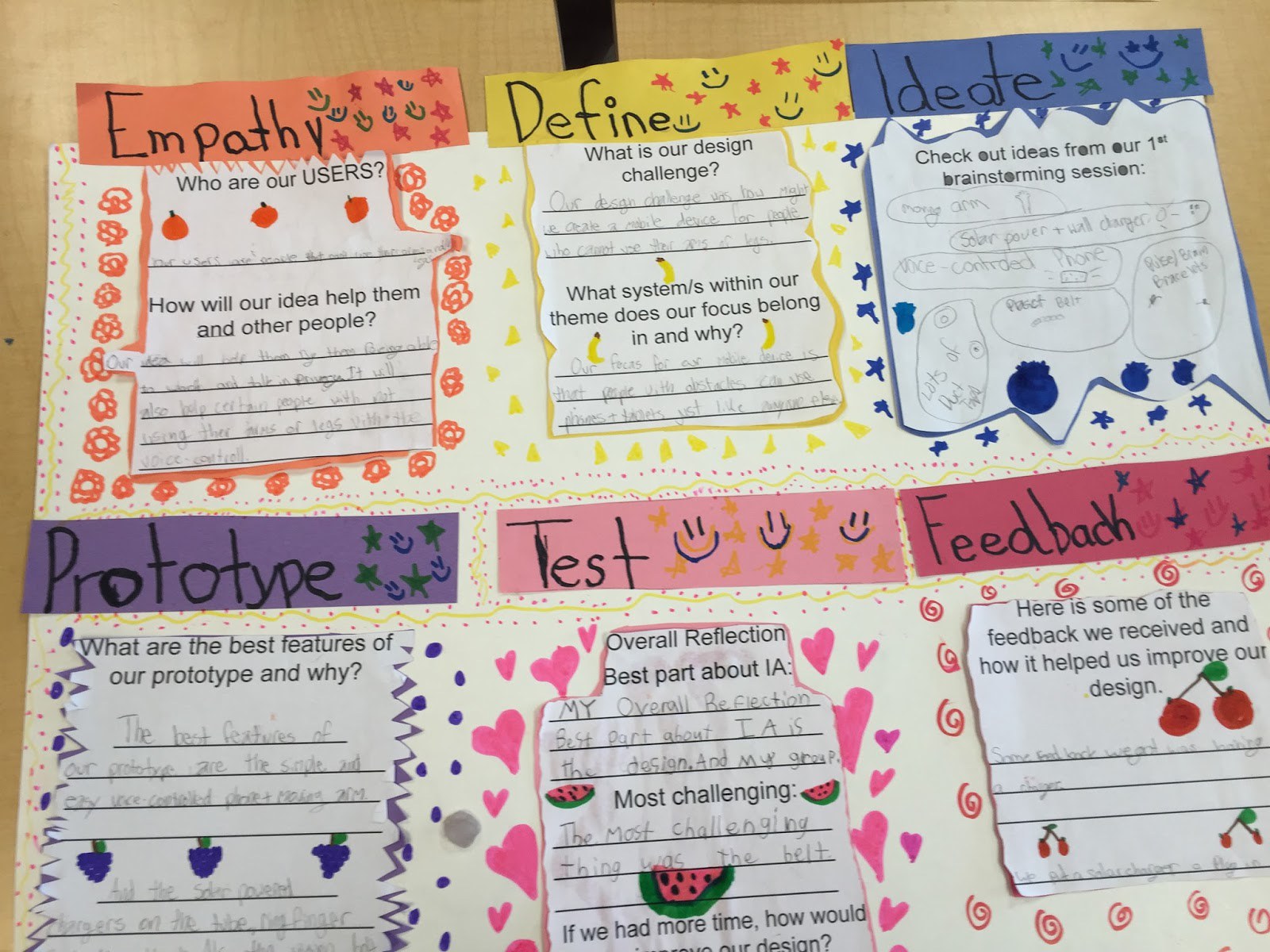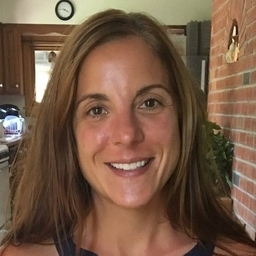New Designs for School
Solving Problems with Design Thinking
Topics

We’ve all had the experience of truly purposeful, authentic learning and know how valuable it is. Educators are taking the best of what we know about learning, student support, effective instruction, and interpersonal skill-building to completely reimagine schools so that students experience that kind of purposeful learning all day, every day.
Practitioner's Guide to Next Gen Learning
Design thinking can be used with students and educators as a launching pad for asking good questions, getting to the root of problems, and building creative solutions.
In this week’s Friday Focus: Practitioner’s Guide to Next Gen Learning, we discuss ways to use design thinking with your students and colleagues as a launching pad for asking good questions, getting to the root of problems, and building creative solutions. Today we will:

In Theory
"I really believe that when people gain this confidence [of design thinking]—and we see it all the time at the d.school and at IDEO—they actually start working on the things that are really important in their lives."
—David Kelley, IDEO founder, from his TED Talk, "How to Build Your Creative Confidence
The first time I heard about design thinking as an approach to problem solving I was working as curriculum director at a school district in Vermont. Problems (or opportunities, depending on how you looked at it) were plentiful, especially because we were launching a new model of learning, so it was helpful to learn new techniques and mindsets for how to approach these challenges.
Design thinking has several definitions, depending on where you look and who you ask, but the heart of it is about people. “Design thinking is a deeply human process that taps into the abilities we all have but get overlooked by more conventional problem-solving practices. It relies on our ability to be intuitive, to recognize patterns, to construct ideas that are emotionally meaningful as well as functional, and to express ourselves through means beyond words or symbols. Nobody wants to run an organization on feeling, intuition, and inspiration, but an over-reliance on the rational and the analytical can be just as risky. Design thinking provides an integrated third way,” according to IDEO, a design firm that we had the chance to visit in 2015. Applying this mindset and thinking “like a designer” is a great approach for all of us, in and beyond schools, to tinker with and create new solutions that we might not have thought of before.
Watch this video from Harvard Business Review to learn more about design thinking.
Evidence Base
Both of these articles were published in Design and Technology Education: An International Journal and examine design thinking techniques in classrooms outside the United States, exhibiting its far-reaching appeal.
- “Transforming Constructivist Learning into Action: Design Thinking in Education” acknowledges the complexity of students’ learning needs in the 21st century and challenges the isolation of individual classroom subjects. In the article, the process of design thinking is broken down and compared to a constructivist learning style to show how it ultimately produces more measureable results among 10th graders in Potsdam, Germany.
- In “Design Thinking in Elementary Students’ Collaborative Lamp Designing Process,” teams of 10- and 11-year-old students in Helsinki, Finland, work together through the design-thinking process to create a more functional lamp. The takeaways include a number of multifaceted real-world lessons, from engaging with a complex, open-ended issue to helping the students build social skills.
Lastly, “Is Design Thinking the New Liberal Arts of Education?,” an article co-authored by the president of Olin College’s mechanical engineering program and a professor of design and mechanical engineering, shares the reasoning and research behind why design thinking will be incorporated into the college’s engineering curriculum. The authors “see engaging creatively as a fundamental way of understanding and being in the world and a vital aspect of a holistic and fulfilling education,” and giving students the opportunity to experience and use design thinking leverages the creativity that’s so essential. They also note that learning in this way is fundamentally experiential and puts the learning experience in the students’ hands, which can feel quite radical, but is essential. Students should leave Olin knowing how to “design it right” but also “take ownership of figuring out how to ‘do the right thing,’ to add value to people’s lives in meaningful and appropriate ways”—a goal that has resonance way beyond Olin.
Instructional Move in Practice
Real-World Problem Solving at Design Tech High School
Burlingame, California

"Design thinking is the foundational cornerstone to the way the school operates. It's how they literally do everything."
—Andy Calkins, NGLC
At the forefront of the design-thinking-in-education approach is Design Tech High School (d.tech). At d.tech, both students and teachers are encouraged to solve any issue they face. “Whenever a student or a faculty member brings up a problem or a complaint, the default response at the school is to say, ‘Go ahead, you’re empowered to solve that problem,’” shares colleague Tony Siddall, who recently spent a day visiting d.tech as part of our recent NGLC learning excursion. Design thinking informs everything that happens at d.tech, from the open, fluid, warehouse-like “hangar” (pictured above) that houses the school to the flexible daily schedule. “They’ve created a culture where students feel engaged in and are part-owners of the learning process,” NGLC Deputy Director Andy Calkins said in reflecting on the visit. Check out this project form, where community members can share problems they want d.tech students to tackle, and read more about their design curriculum.
Skyline High School and STEM
Longmont, Colorado

The design-thinking process as illustrated by a student at Skyline.
At Skyline High School, design thinking has been incorporated to help make technology and other STEM fields more accessible to students. This video shows how students engage with design thinking every day to prepare them for future problem solving and to pave the way for the students that will follow them. NGLC will be convening grantees on a learning excursion to Colorado schools, including Skyline High School and their Innovation Center later this month.
Improvement Science’s Connection to Design Thinking at Shue-Medill Middle School
Newark, Delaware
Although not exactly design thinking, improvement science is another way to problem solve that takes an individualized and fluid approach to continuous improvement and student and teacher growth. At Shue-Medill Middle School, teachers tailor the steps outlined below, which are similar to the steps in the design process, to their individual classrooms and collect their experiences to cultivate improvement and change. Shue-Medill has partnered with other schools as part of the Student Agency Improvement Community, and the Carnegie Foundation has created a platform for the data these schools have gathered around improvement science.

Space Matters at IDEO
We can learn and be inspired by looking both inside schools and beyond, so although we usually use the In Practice section to focus primarily on school, we’d be remiss not to mention some insights from IDEO, especially when it comes to designing space. During past visits to IDEO, it was clear that space can foster collaboration, increase efficiency, and infuse joy. Providing vending machines filled with much-needed technology peripherals like phone chargers, a family-style kitchen with healthy food and drinks, shared open spaces, standing desks, comfortable couches, and smaller team work spaces lining the outside edges of the buildings are just a few ways the IDEO staff made good design choices—they remind and nudge us that details matter as we’re designing our learning environment spaces. For more on space design, check out this Reimagining Space toolkit.
Additional Resources on Design Thinking
- “Behind the Sticky Notes: Design Thinking” is an article written for Stanford’s college paper by a student seeking to understand what design thinking is really all about and why it’s all the rage at his university, home of the d.school. A great, short piece that will give insight into design thinking from a student’s perspective and share how it’s being used in a college setting to help students design their lives and experiences.
- Design Thinking for Educators is a toolkit created by IDEO and educators to help users apply design thinking principles in their classrooms, schools, and communities.
- Design Thinking Hawaii, a collection of individuals in Hawai’i who are using design thinking to effect change in their community, has a slew of posts and resources on their WordPress about how design thinking can be used in schools.
- d.school’s Virtual Crash Course in Design Thinking is a terrific starting place for students and teachers to pull up their sleeves and try out design thinking.
- “The Challenge of Change,” an article from Harvard Graduate School of Education Usable Knowledge site, starts with “I've never met a teacher who doesn’t value collaboration, creativity, and curiosity. Why is it, then, that so many of our classrooms are devoid of these very traits?” This question leads to many discoveries and ponderings about how inevitably change requires that we give something up, a reality that’s hard in all walks of life, school included. This short read is a useful tool for the empathy stage of design thinking—in order to really approach our subjects with empathy, it’s critical to understand why certain things can be hard. What could be designed to change that?
The team and I would like to extend special thanks to Nicole Falcone of 2Revolutions for her help in putting together this edition.




